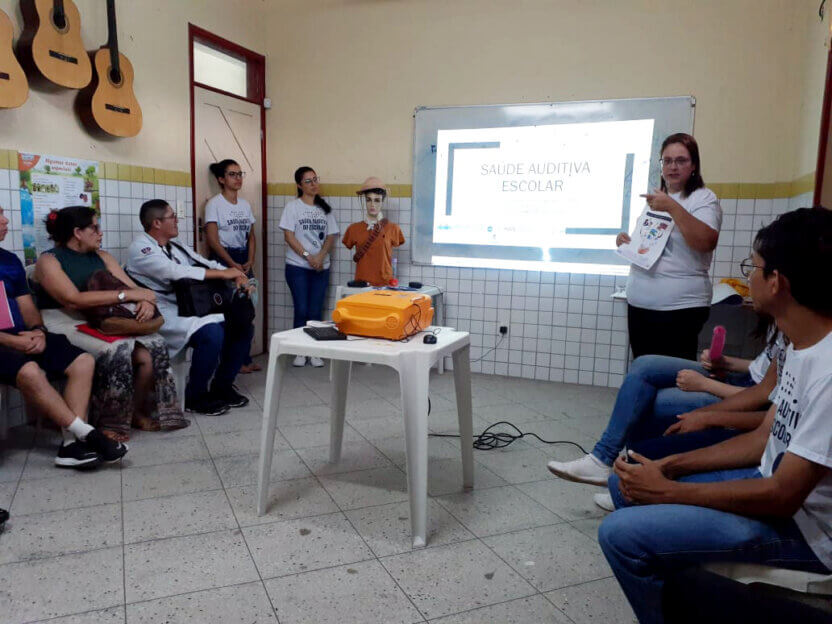By Gabriel Mascena and Jordana Vieira
Researchers from the Hearing and Language research base at the Laboratory of Technological Innovation in Health at the Federal University of Rio Grande do Norte (LAIS / UFRN) carried out auditory health education activities for children and teachers from the 1st to the 9th grade of elementary school at the Auta de Souza Municipal School, located in the municipality of Macaíba, metropolitan region of Natal / RN. The activities were allusive to the World Hearing Day, celebrated on March 3 worldwide.
The action was attended by parents and students from the education center. According to Professor Sheila Balen, coordinator of the Hearing and Language research base, the work aimed to show those involved the importance of hearing care, from cleaning the ear canal, to the use of equipment such as earphones. heard.
“When planning this action, we focused on Cocleane (mannequin used for the tests) and how to follow the installation of the decibel meter microphone in the ear and have a good measurement. This seems apparently simple to someone in the technology field, but not to speech therapists. This activity was certainly the most effective action with children and teachers on the impact of using the swab inside the ear, ”he said.
The teacher highlighted the low cost of the activity applied to the public that participated in the action. “Very light technology, negligible price and phenomenal impact. It was a moment to guide with joy and be faced with the surprise of what is done inside the ear without knowing it ”, he said, adding that for the demonstration, cards, plastic tubes and modeling clay were used.
World Hearing Day
In 2007, the first event was held to mark March 3 as World Hearing Day. Since then, a campaign has been carried out annually by the World Health Organization (WHO) Office for the Prevention of Blindness and Deafness, and aims to disseminate information and promote actions aimed at preventing hearing loss and improving hearing care.
WHO is responsible for coordinating the events that take place every year, worldwide, in addition, it has the role of selecting the central theme of the campaign. Based on the choice, educational materials are distributed free of charge in several languages addressing the subject.
In 2020 the chosen theme was “An audition for life. Do not let deafness limit you ”. In this perspective, WHO launched a free application for mobile devices, “hearWHO”. In the application it is possible to check the user’s hearing level, the target audience is people who are at risk of hearing loss or who have already experienced some of the symptoms related to this problem.





